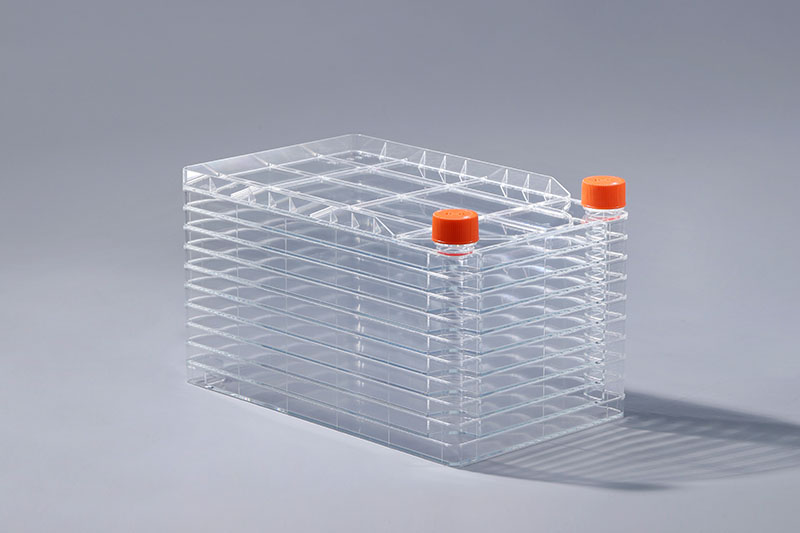The cell factory is a multi-layer structure of cell culture consumables. Different from cell culture flasks, culture plates and other consumables, this kind of container is relatively complicated in operation, so how to use it specifically.
Cell factories are generally used to expand the culture of cells. First, the number of cells to be seeded needs to be determined according to the culture area of the factory before operation. According to the number of cells cultured per unit area in the cell flask, multiply by the culture area of the cell factory, and then divide by the inoculation ratio of cultured cells. Next, prepare the working solution required for cell culture, such as serum, protease, etc.
After the preparations are done, you can inject the liquid into the container and pour it directly through the liquid inlet. Pay attention to controlling the liquid flow rate to avoid generating too many air bubbles. After the liquid injection is complete, turn the container to one side so that the liquid is evenly distributed between the layers. The container is then tilted toward the end with no inlet/outlet to distribute the liquid evenly between each layer. In the process of tilting, it is necessary to ensure that the side of the cells entering the liquid is raised at the same time, and it is necessary to avoid the flow of liquid between the layers and destroy the distribution between each layer. Finally, lay the container flat and place it in a suitable culture environment.
In the process of operation, it should be noted that when moving the cell factory, try to keep it as level as possible to avoid uneven distribution of liquid caused by tilting, which will affect the cell growth effect.
The FAI climbed 5.9 percent year-on-year in the first 11 months of 2018, quickening from the 5.7-percent growth in Jan-Oct, the National Bureau of Statistics (NBS) said Friday in an online statement.
The key indicator of investment, dubbed a major growth driver, hit the bottom in August and has since started to rebound steadily.
In the face of emerging economic challenges home and abroad, China has stepped up efforts to stabilize investment, in particular rolling out measures to motivate private investors and channel funds into infrastructure.
Friday's data showed private investment, accounting for more than 60 percent of the total FAI, expanded by a brisk 8.7 percent.
NBS spokesperson Mao Shengyong said funds into weak economic links registered rapid increases as investment in environmental protection and agriculture jumped 42 percent and 12.5 percent respectively, much faster than the average.
In breakdown, investment in high-tech and equipment manufacturing remained vigorous with 16.1-percent and 11.6-percent increases respectively in the first 11 months. Infrastructure investment gained 3.7 percent, staying flat. Investment in property development rose 9.7 percent, also unchanged.
 English
English



















































